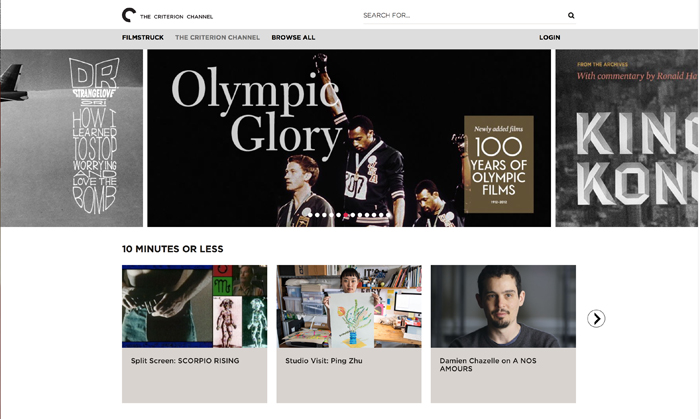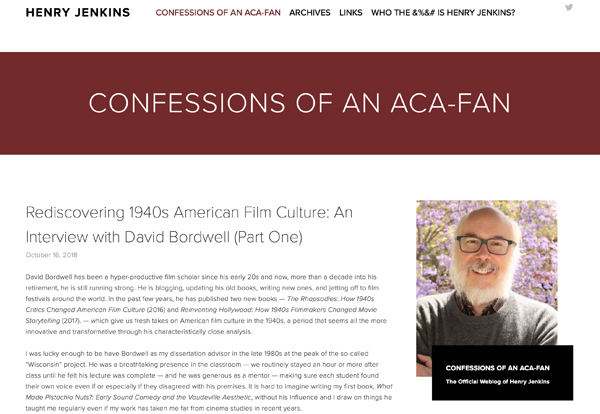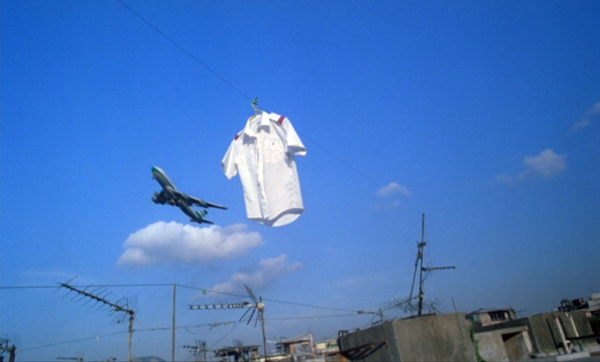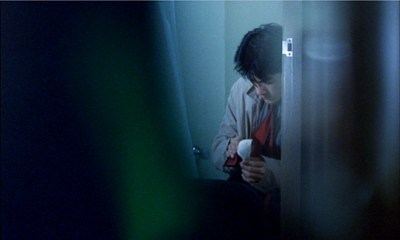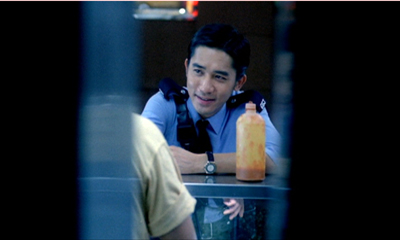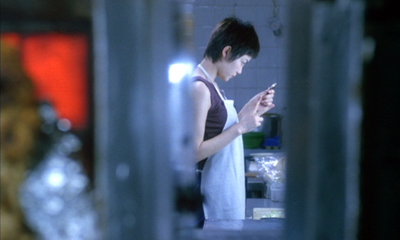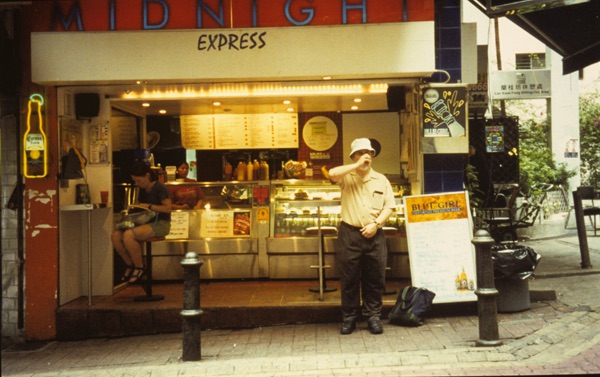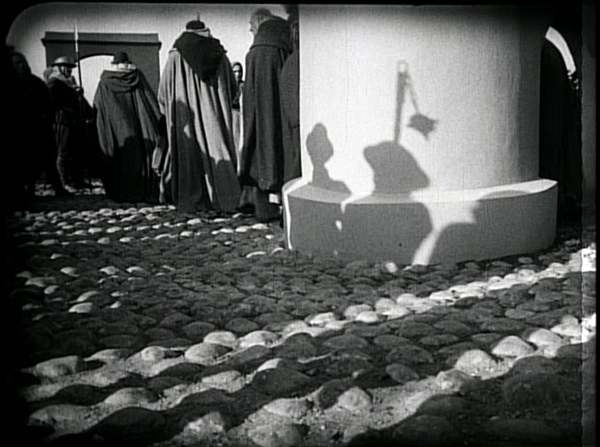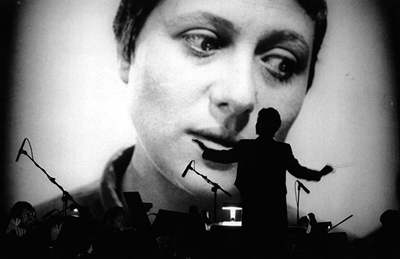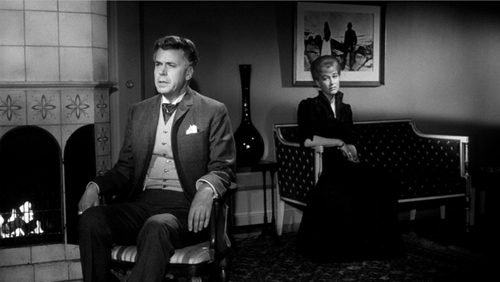Archive for the 'People we like' Category
On the Criterion Channel: Jeff Smith on SHOOT THE PIANO PLAYER
DB here:
Last Friday TCM/ATT/WarnerMedia announced the decision to cease streaming FilmStruck on 29 November. Soon after, the Criterion Channel posted another entry in our “Observations on Film Art” series. This one is from Jeff Smith, who analyzes Truffaut’s widescreen shot design. It’s a fine discussion, and we hope that if you’re a subscriber, you’ll have a look in the waning days of the service.
By good luck, the Channel has also posted an interview with Damien Chazelle on Pialat’s A Nos amours. Damien filmed the interview during his visit to Madison last February.
As you probably know, the reaction to the closing of FilmStruck has been swift and intense. You can read ATT’s official rationale here, along with Variety‘s speculation about the strategic plan behind it. The Criterion people have provided a statement:
We have some sad news to share: earlier this morning, Turner and Warner Bros. Digital Networks announced plans to shut down FilmStruck, the streaming service that has been our happy home for the last two years. Like many of you, we are disappointed by this decision. When we launched the Criterion Channel in 2016, we had two goals: to ensure that our entire streaming library remained available, and to address our audience in our own voice. We’re proud of the work we’ve done, bringing curated programming and the full range of supplemental features to the streaming space, championing a diverse array of filmmakers from beyond our collection and creating original content that invites you into exciting conversations about cinema culture.
All this is very new, and we’ll be sure to keep you updated as we learn more details. But rest assured that we are still committed to restoring and preserving the best of world cinema and bringing it to you in any medium we can. In the weeks ahead, we’ll keep you informed about the great programming you can watch on the Channel before it shuts down on November 29, and we’ll be trying to find ways we can bring our library and original content back to the digital space as soon as possible. Thanks to everyone who enjoyed FilmStruck, and we hope you’ll join us as we look forward to what the future brings.
Kristin, Jeff, and I have posted twenty-four entries in our series and have very much enjoyed preparing them. We have four more in the can, one of which may go live in November. We have no insider information, but of course we hope we can continue with the series on whatever new platform Criterion might find.
Meanwhile, better binge-watch all those classics while you can. And thanks to the many people who have written us over the years and in recent days. We appreciate their support–and that of the Criterion staff, who care deeply about cinema.
Thanks to Kim Hendrickson, Grant Delin, Peter Becker, and the whole Criterion team for their superb work. A complete list of our FilmStruck installments is here.
Two aca-fans being aca, and a little fannish
You probably know Henry Jenkins’ vast website “Confessions of an Aca-Fan.” It hosts blog entries, essays, interviews, and a podcast. As both a media scholar (the aca part) and a connoisseur (the fan), Henry has wide-ranging interests. He analyzes/enjoys/celebrates/criticizes film, TV, comics, music, and videogames (he testified about them to Congress). He’s also a big advocate for the role of media in education and political change.
Henry was a student of ours here at Madison, and I directed his dissertation. That became the book What Made Pistachio Nuts? Early Sound Comedy and the Vaudeville Aesthetic. Currently celebrating its twenty-fifth anniversary, it’s still very much worth reading as an original and entertaining cultural study of movie comedy. While doing his dissertation, Henry was also writing his trailblazing study of fan culture, Textual Poachers: Television Fans and Participatory Culture. (It now has an updated, twentieth-anniversary edition.)
Soon enough he followed that with another influential book, Convergence Culture: Where Old and New Media Collide. The idea of “transmedia storytelling” that Henry set forth here became a byword for the media industry as well as for scholars; his prophecy that we’d see a lot more of it has come true with a vengeance. We had a nifty dialogue about the idea online some years back (here and here).
And these are just three of his seventeen books! Henry is an epic multitasker, so he has found the energy to be an inspiring teacher as well. All of us at Wisconsin are thoroughly proud of him.
Naturally, when Henry asked me to participate in an email interview around my two 1940s books, The Rhapsodes and Reinventing Hollywood, I felt honored. Now he has run our conversation in four installments on his site, starting here.
I hope the answers I provide will shed light on my research projects. (As for the fan part: Yes, The Greatest Showman and Game Night are mentioned.) At the least I think people will learn a lot from Henry’s questions. Thanks to him for reigniting the spark of conversations we’ve had over the years.
What a difference a day makes: CHUNGKING EXPRESS comes to the Criterion Channel
Chungking Express (1994).
DB here:
Chungking Express is nearly twenty-five years old, and it remains as jittery and sparkling as it was in 1994. I saw it on laserdisc in the fall of that year and immediately cottoned to it–more keenly than to its mate, Ashes of Time (which I came to admire eventually). I saw it on the screen in spring of 1995 during my first visit to the Hong Kong International Film Festival. (It’s unspooling, as Variety would say, as we speak, although I’m not there dammit.) That was also when I met Wong Kar-wai for the first and only time. I was asked to present him the Hong Kong Film Critics Society award for Ashes of Time. During the same visit, I was at the Hong Kong Film Awards when Chungking Express won for best picture, best director, best actor (Tony Leung Chiu-wai), and best editing (William Chang Che-wi).
The trip was a turning point in my life. Thanks to that visit and later ones, I met Li Cheuk-to, Ho Wai-ling, Jacob Wong, Stephen Teo, Athena Tsui, Law Kar, Bede Chang, Shu Kei, Michael Campi, Ross Chen, Yvonne Teh (of Webs of Significance), Chuck Stephens, Stefan Hammond, Grace Ng, Shelley Kraicer, Lau Sing-hon, Joanna Lee, Ken Smith, Lisa from Toronto, Ding Yuin Shan, To Kei-chi, Yau Nai-hoi, Johnnie To, Sam Ho, Fu Poshek, Peter Chan, Ann Hui, Dora Mak (from UW), Bérénice Reynaud, Wong Ain-ling, Frederic Ambroisine, King Wei-chu, Chris Berry, Bob Davis, and many more people who became good friends. In later visits I got back in touch with old friends turned expats–Patricia Erens, Mike and Melissa Curtin, Darrell Davis, Yueh Yu-yeh, Nat Olson (from UW, of Hong Kong Hustle), Mette Hjort, Paisley Livingston–and longer-term comrades like Tony Rayns, Mike Walsh, Gary Bettinson, and Peter Rist. The Fragrant Harbour, a crossroads of Chinese culture, became a central node in the only social network that matters to me: the non-virtual one. Not Facebook but Face-to-Face.
I think of Hong Kong often; I regret not being able to attend the festival in recent years; and I’m saddened when I reflect that Ain-ling and Wai-ling are no longer with us. Twenty-four years went by too fast.
Chungking Express was made during a gap in the filming of Ashes and proved that for once Wong could turn out a quickie. Andrew Lau started as cinematographer for the first story, but when he left to make his own film, Chris Doyle picked it up. Both made good use of that loose “free camera” style that now seems to be everywhere. I usually find it annoying, but here the ambiance and the players and the sheer look of the city win me over. There’s also some peekaboo slit-staging.
The movie benefits from an ingratiating and eclectic score, drowsy voice-overs, and people who like to eat and talk about romance.
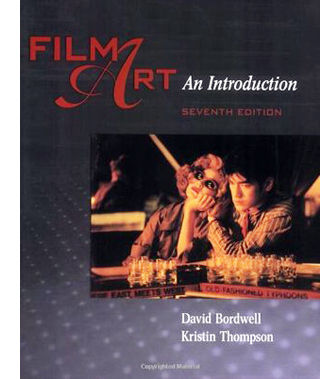 Chungking Express typifies everything that I love about Hong Kong and its people and its cinema. When I see that jet and that clothesline, I remember looking out the window of such a plane and wondering about the people I saw on the rooftops, scarily close. Staying at the Salisbury YMCA, I was a short walk from the Bottoms Up bar and Chungking Mansions. And when I finally stopped by the Midnight Express and realized that the California Café was just across the street, I realized how tricky Wong had been with cinematic geography. (I didn’t get to the Midlevels escalator until later.) Chungking Express captures the careenng energy of this city, while warming it with a preposterous lyricism. Faye treats her salad squirters like marimbas, and those guys have to be the least tough cops in the territory.
Chungking Express typifies everything that I love about Hong Kong and its people and its cinema. When I see that jet and that clothesline, I remember looking out the window of such a plane and wondering about the people I saw on the rooftops, scarily close. Staying at the Salisbury YMCA, I was a short walk from the Bottoms Up bar and Chungking Mansions. And when I finally stopped by the Midnight Express and realized that the California Café was just across the street, I realized how tricky Wong had been with cinematic geography. (I didn’t get to the Midlevels escalator until later.) Chungking Express captures the careenng energy of this city, while warming it with a preposterous lyricism. Faye treats her salad squirters like marimbas, and those guys have to be the least tough cops in the territory.
I wound up talking about the film a lot. I taught it in courses and lectured on it elsewhere. It got a chapter in Planet Hong Kong and an analysis in Film Art: An Introduction.
Now it’s the subject of an installment on our Criterion Channel series on FilmStruck. There I try to show how its narrative construction welds together bits that might otherwise seem disconnected. Seeing it a couple more times to prepare that commentary, I found still more to admire. In the Mood for Love is totally fine, and I’m a big fan of As Tears Go By and The Grandmaster, but Chungking Express is the one I’ll watch any time, any place, anywhere. I like pineapple. I like bittersweet chocolate too.
Later this semester I get to meet a class to talk with them about this charming movie. For 75 minutes, I’ll once more be in touch with a city, only partly imaginary, that for all its harsh edges is filled with flirtations, dead-end love affairs, good humor, and expired canned goods.
I hope you like it too. If you haven’t seen it, what are you waiting for? You can play a clip from the installment on the Criterion website. With the original DVD release now out of print and pricey, FilmStruck is your best chance to see it on video.
Thanks as ever to Peter Becker, Kim Hendrickson, and Grant Delin of Criterion for the fun of making this installment. Our entire Criterion series is here.
For more on Hong Kong film, check this tag.
P.S. 28 March 2018: Midnight Express had a makeover after the film made it famous, as you see below, but it’s now a 7-11. Nate Olson’s Hong Kong Hustle site shows the result. Thanks to Miklos Kiss and Dan Balogh for updating us.
Dreyer, and more, in Houghton
La Passion de Jeanne d’Arc (1928).
DB here:
Erin Smith, of Michigan Technological University, distinguished herself during her years at Madison as a grad student in both English and Film. She’s moved more fully into media studies and production, including documentary work. When she invited me to visit 41 North Film Festival this coming weekend, how could I refuse?
There’s a lot going on, most elaborately a screening of Dreyer’s La Passion de Jeanne d’Arc with orchestral and choral accompaniment.
I’ve never attended a performance of Richard Einhorn’s score, so this should be quite something. (The Criterion DVD version of the film offers it as optional accompaniment.) In addition, there are several other films showing over the weekend. You can go here for the full schedule, which includes one of our recent favorites, Varda’s Faces/Places.
While Kristin and I are there, I’ll be doing a lecture on Dreyer and another talk based on Reinventing Hollywood.
My first book was a little guide to La Passion de Jeanne d’Arc, and my second book was a survey of Dreyer’s films. I’ve returned to him sporadically since then, and I’ve had occasion to rethink his role in film history–especially in light of my and others’ research on silent cinema. (For example, “The Dreyer Generation,” “Dreyer Re-Reconsidered,” “Nordisk and the Tableau Aesthetic,” and this blog entry on Criterion’s Master of the House release.)
Dreyer remains for me an impressive, enigmatic figure. He was sensitive to the changing styles of cinematic expression from the 1920s to the 1960s, and yet he went his own way. His early silents were au courant with trends in European filmmaking, especially kammerspiel. Yet Jeanne was one of the wildest movies of the era, a hallucinatory blend of Expressionism, French Impressionism, and Soviet Montage. It still seems to me resolutely unique, which partly secures its timelessness.
After the no less weird Vampyr (1932), Dreyer’s films seemed old-fashioned in their pacing; even Danish critics called Day of Wrath (1943) sluggish. Yet as things played out his “archaic” style in the sound era looks more and more prophetic. He said he learned from Antonioni, but Ordet (1955) and Gertrud (1964; below) go far beyond the deliberate pacing of European films of his day and look forward to Straub/Huillet and Béla Tarr.
Was he the first director of “slow cinema”? I now see him as integrating principles of the “theatrical” cinema of the 1910s–a style he rejected in his youth–into the modern sound cinema, in effect showing the continued viability of the approach, while pushing it to extremes. Just like what he did with editing and shot design in Jeanne, come to think of it. For such a quiet guy, he was pretty bold.
Michigan Tech is located in gorgeous country (the UP, as we midwesterners call it). Kristin and I look forward to our road trip, accompanied by old Orson Welles radio shows. We thank Erin and her colleagues for inviting us!
A view of Houghton, MI, from the Portage waterway.













